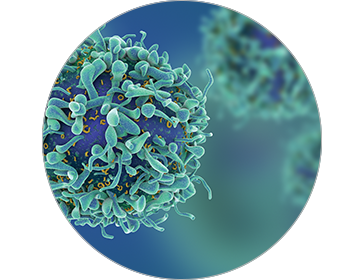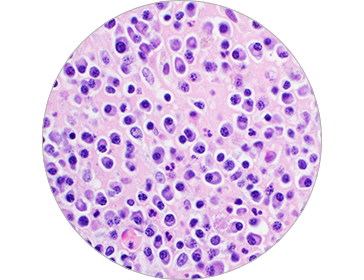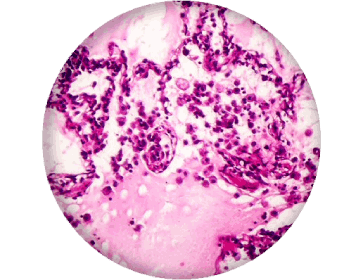Oncology
Every patient with cancer faces a unique journey, with battles great and small along the way. Supporting them to overcome these challenges is both our mission and privilege.
Cancer is one of the most debilitating diseases known to humankind. According to the World Health Organization, it is a leading cause of death worldwide, accounting for an estimated 9.6 million deaths1 in 2018. Every year, 50% of new cancer cases2 in the world occur in Asia Pacific. It is expected that cancer deaths in Asia2 will increase by 36% in 2030.
At Janssen, our work in the oncology space spans more than 30 years. This is reflected in our legacy of delivering transformational medicines that redefine the standard of care for our patients.
Prostate cancer

Prostate cancer is the fourth most common cancer in men, accounting for 5.5% of male3 cancer deaths in Hong Kong.
Prostate cancer has no specific symptoms and can go undetected for a long period. The lack of effective therapeutic options remains an unmet need.
B-cell malignancies

Chronic lymphocytic leukaemia (CLL)/small lymphocytic lymphoma (SLL) are cancers of the blood and bone marrow. About 10% of patients4 who develop CLL/SLL have a family history of the disease. Treatments include targeted therapy and chemo-immunotherapy.
Multiple myeloma

Multiple myeloma is a cancer of the bone marrow cells. It occurs when white blood cells grow uncontrollably, leading to a shortage of healthy blood cells. Patients with multiple myeloma may experience fatigue, anaemia and kidney problems if left untreated.
Lung cancer

Lung cancer is the second most common cancer in Hong Kong. In 2018, there were 5 252 new cases of lung cancer, accounting for 15.4% of new cancer cases overall. The ratio of male to female cases was about 1.6 to 1.5,6
Lung cancer was also the leading cause of cancer deaths as a whole in Hong Kong. In 2018, a total of 3 853 people died from this disease, accounting for more than a quarter of all cancer deaths.7 About 80 to 85% of lung cancers are Non-Small Cell Lung Cancer (NSCLC),8 which is typically only diagnosed after metastasizing. 9 As such, early detection is vital in helping to reduce the rates of lung cancer in the region.
References
-
World Health Organization. Cancer. September 12, 2018. Accessed November 26, 2020. https://web.archive.org/web/20201101050926/https://www.who.int/news-room/fact-sheets/detail/cancer.
-
Janssen Asia Pacific. Oncology. August 11, 2016. Accessed November 26, 2020. https://web.archive.org/web/20160907111228/https://www.janssen.com/apac/therapeutic-focus/oncology.
-
Centre for Health Protection. Prostate Cancer. Updated May 20, 2020. Accessed November 26, 2020. https://web.archive.org/web/20201126094538/https://www.chp.gov.hk/en/healthtopics/content/25/5781.html.
-
Slager SL and Kay NE. Familial CLL: What does it mean to me? Clin Lymphoma Myeloma 2009; 9(Suppl 3):S194-S197.
-
Hong Kong Cancer Registry, Hospital Authority (haorg.hk). Accessed on 8th Sep 2021 https://www3.ha.org.hk/cancereg/
-
Centre for Health Protection - Lung Cancer (chp.gov.hk). Accessed on 8th Sep 2021 https://www.chp.gov.hk/en/healthtopics/content/25/49.html
-
Cancer Online Resource Hub - Cancers in Hong Kong - Common Cancers in Hong Kong - Lung Cancer. Assessed on 8th Sep 2021 https://www.cancergov.hk/en/hong kong cancer/common_cancers in_hong kong/lung_cancer.html#1
-
American Cancer Society. About lung cancer. Accessed 8th Sep 2021
-
National Cancer Institute. Cancer Stat Facts: Lung and Bronchus Cancer. Accessed on 8th Sep 2021
